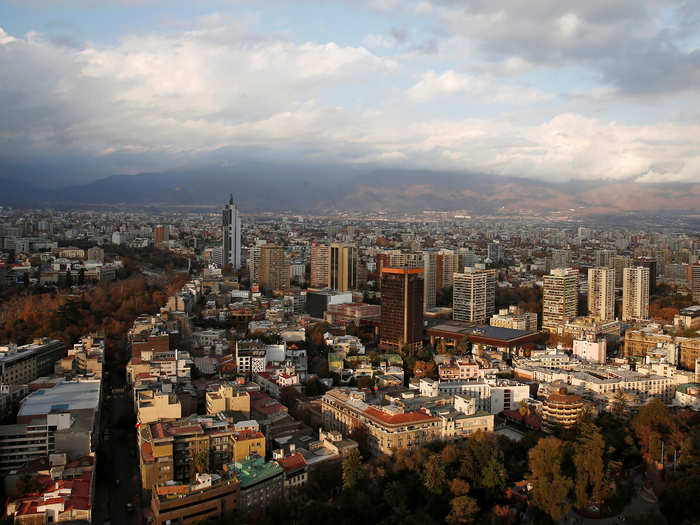
Countries that are at the top-right of the curve include several developing countries. For instance, Chile has an elasticity of 0.52 and a Gini coefficient of 0.46, both high scores compared to other countries on the Great Gatsby Curve.
This means that it is harder for children born into the 25th percentile to move up the economic ladder compared to a child in the same percentile in a country with low inequality and low income dependency on their parents' income.
More people in developing countries are having difficulty moving up the economic ladder, according to a 2018 World Bank report.
Carolina Sanchez, senior director of the Poverty and Equity Global Practice at the World Bank, said in the report that developing regions like South Asia and Africa are experiencing "stalled mobility" because children's economic success is dependent on their parents' income.

Interestingly, and not surprisingly, the relationship between inequality and mobility can also be seen using the number of generations it will take for someone in a low-income family to move up the social ladder. In countries with better upward mobility, it would take fewer generations for low-income families to reach the country's average income.
The OECD created a bar chart that compares the number of generations that it would take for low-income families to reach the average income in countries part of the OECD.
For instance, in Nordic countries, it only takes about two to three generations, while in China where there is higher inequality and high elasticity, it takes seven generations, according to the OECD report.

If we examine upward mobility in educational attainment, we see that countries with less income inequality tend to have higher upward educational mobility, where a child earns a degree at a higher education level than their parents.
Using OECD upward educational mobility data from its 2018 education report, we measured upward educational mobility, on the vertical axis, against income inequality, on the horizontal axis. Unlike the previous charts, higher values along the vertical axis means more upward mobility.
So, a child born into a family at the 25th percentile in a country with low inequality has a higher chance of having a better education than their parents than someone born into a place with greater inequality.
The OECD notes using findings from academic research that policies that aim for educational equality regardless of parents' educational background can help improve economic mobility in a country.
 Saudi Arabia wants China to help fund its struggling $500 billion Neom megaproject. Investors may not be too excited.
Saudi Arabia wants China to help fund its struggling $500 billion Neom megaproject. Investors may not be too excited. I spent $2,000 for 7 nights in a 179-square-foot room on one of the world's largest cruise ships. Take a look inside my cabin.
I spent $2,000 for 7 nights in a 179-square-foot room on one of the world's largest cruise ships. Take a look inside my cabin. One of the world's only 5-star airlines seems to be considering asking business-class passengers to bring their own cutlery
One of the world's only 5-star airlines seems to be considering asking business-class passengers to bring their own cutlery Experts warn of rising temperatures in Bengaluru as Phase 2 of Lok Sabha elections draws near
Experts warn of rising temperatures in Bengaluru as Phase 2 of Lok Sabha elections draws near
 Axis Bank posts net profit of ₹7,129 cr in March quarter
Axis Bank posts net profit of ₹7,129 cr in March quarter
 7 Best tourist places to visit in Rishikesh in 2024
7 Best tourist places to visit in Rishikesh in 2024

Copyright © 2024. Times Internet Limited. All rights reserved.For reprint rights. Times Syndication Service.